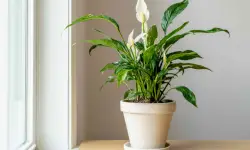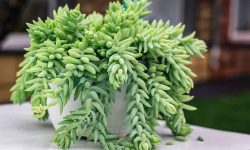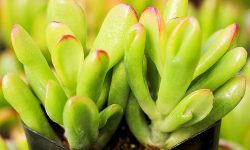The Mass Cane Plant is a popular choice for indoor plant enthusiasts due to its striking appearance and relative ease of care. If you’ve welcomed this elegant foliage into your home or office, it’s essential to provide it with the proper care to ensure it thrives. In this comprehensive guide, we will walk you through the essential steps and tips on how to care for your Mass Cane Plant.
About Mass Cane Plant (Corn Plant)
The Mass Cane Plant, also known as Dracaena Massangeana or the Corn Plant, is a fascinating addition to any indoor space. This resilient and visually appealing plant boasts several interesting characteristics that make it a popular choice among plant enthusiasts.
The mass cane is a low-maintenance beauty that is popular in many homes and workplaces in the United States and the United Kingdom despite being originated from Africa.
In terms of size, the Mass Cane Plant typically reaches a height of 4 to 6 feet, making it a substantial presence in any room. Its elegant, cane-like stems add a touch of sophistication to your indoor environment.
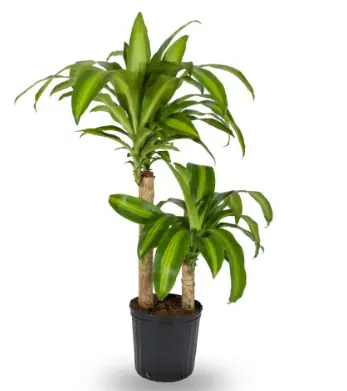
Temperature and Environment
The Mass Cane Plant is like Goldilocks when it comes to temperature – it has a preference for conditions that are just right. Ideally, it flourishes in a temperature range of 60°F (15°C) to 75°F (24°C). This means it’s perfectly at home in an indoor environment where the climate is neither too hot nor too cold. So, whether it’s in your living room, office, or any other indoor space, the Mass Cane thrives in conditions that are just perfect for its well-being.
Light Requirements
Lighting is a critical aspect to keep in mind when caring for the Mass Cane Plant. This elegant indoor greenery thrives in bright, indirect light, making it an ideal choice for spaces with ample filtered sunlight. However, it’s crucial to avoid exposing it to direct sunlight, as this can scorch its delicate leaves. The Mass Cane’s adaptability shines through in its ability to tolerate lower light conditions, making it a versatile addition to virtually any corner of your home or office. Whether it’s a spot bathed in gentle sunlight or a more dimly lit area, the Mass Cane Plant can grace your space with its presence and add a touch of natural beauty.
Watering
Proper watering is a key element in ensuring the well-being of your Mass Cane Plant. Achieving the right balance is paramount. Generally, watering your Mass Cane once a week should suffice. The goal is to maintain soil that is either slightly damp or just slightly dry between watering sessions. Overwatering is a pitfall to avoid, as this plant is not a fan of excessive moisture. By adhering to this watering routine and striking the right balance, you’ll keep your Mass Cane thriving and happy, displaying its lush, vibrant foliage for years to come.
Soil and Potting
Selecting the right soil and potting strategy is vital for the health and growth of your Mass Cane Plant. Opt for well-draining potting soil to provide the ideal foundation for your plant’s root system. This type of soil prevents water from accumulating at the bottom of the pot, reducing the risk of root rot.
When it comes to repotting, exercise patience. It’s generally necessary only once every two to three years, as the Mass Cane prefers slightly cramped conditions. When you do decide it’s time for a new pot, choose one that is slightly larger than the current one. This provides the plant with just enough room to expand its roots and grow without becoming excessively spacious. By following these guidelines for soil and potting, you’ll create an environment in which your Mass Cane can flourish and continue to grace your space with its beauty.
Fertilization
Proper fertilization plays a significant role in maintaining the health and vitality of your Mass Cane Plant. To support its growth, be sure to feed it with a balanced liquid fertilizer during its active growing season, which typically spans the spring and summer months. Aim for a feeding schedule every 4 to 6 weeks during this period to provide your plant with the necessary nutrients for lush and vibrant foliage.
However, it’s essential to adjust your fertilization routine to align with the plant’s natural growth cycles. During the dormant winter months, when the Mass Cane experiences slower growth, reduce or even pause fertilization altogether. This thoughtful approach to fertilization ensures that your Mass Cane receives the appropriate nourishment at the right times, promoting its overall well-being and longevity.
Pruning
When caring for your Mass Cane Plant, pruning is a useful technique that promotes both aesthetics and growth. Trim any yellow or brown leaves right away to maintain your plant’s finest appearance. This not only improves its appearance but also promotes new growth to take the place of the foliage that was removed.
Additionally, cutting the top might assist you regulate the height of your Mass Cane if it grows too tall for its allotted location. This procedure encourages a bushier, more compact appearance while allowing you to maintain the plant at a size that fits your indoor setting. You’ll not only guarantee that your Mass Cane looks its best but also promote its general health and vigor by include frequent pruning in your care regimen.
Pest Management
Vigilance in pest management is essential to maintain the health of your Mass Cane Plant. Keep a watchful eye for common indoor plant pests, particularly mealybugs and spider mites. These tiny intruders can quickly infest your plant if left unchecked.
Should you detect any signs of infestation, it’s crucial to take prompt action. Treat the affected Mass Cane with effective solutions like insecticidal soap or neem oil. These natural remedies can help eliminate pests while minimizing harm to your plant and the environment.
Regularly inspecting your Mass Cane and acting swiftly in the event of a pest invasion will help ensure that your plant remains pest-free and continues to thrive in its indoor environment.
Pet Safety
This shrub, an Asparagaceae member with a moderate growth rate, contains saponins in its leaves, stems, and roots. The naturally occurring foamy substance upsets a pet’s stomach if it is consumed. Following its intake, cats may experience hypersalivation, depression, dilated pupils, vomiting (sometimes with blood). So, if you have furry friends roaming around, it’s wise to place this plant out of their reach or consider alternative pet-friendly greenery.
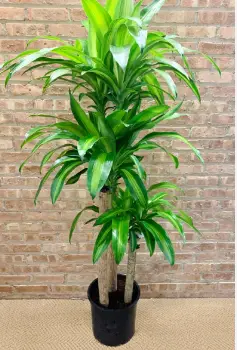
Problems with Mass Cane Plants and remedies:
– Brown leaf tips: The most frequent causes of brown leaf tips are overwatering and irregular watering. To restore the appearance of healthy foliage, either clip off the brown portions of the leaves or cut the brown leaves off entirely. The leaves are quite receptive to being trimmed back.
– Yellow leaves: can be a result of acclimatization, submersion, or aging. There is a method for getting the leaves off maize plants. Split the leaf in half, starting at the tip, then start tearing straight down the centre all the way back. The two pieces should then separate with ease.
– Wrinkled stalks: Strong root injury or extreme underwatering are the causes of wrinkled stalks.
– Rotten stalks: Extreme overwatering or root damage are the causes of rotten stalks or mushy canes.
– Pests: are most prevalently mealy bugs. The best course of action is to keep your plant healthy, remove any obvious pests from the leaves, and, if necessary, remove new leaf crowns.
– Fungus gnats: Any indoor plant may experience fungus gnat problems. Overwatering is the most frequent reason for them.
What are the advantages of the Mass Cane Plant compared to other indoor plants?
– Slow growth ensures that the mass cane will fit into a certain location for a long time with little upkeep.
– Because the leaves are long and strap-like, cleaning is simple. Watering is simple.
– Unlike other houseplant trees like ficus, rhapis, or mahogany, mass cane can fit indoors and has a similar height and appearance to a tree while needing less upkeep.
– It makes the air cleaner. According to the NASA Clean Air Study, dracaena plants eliminate formaldehyde as well as other toxins like benzene, trichloroethylene, and xylene from the air in your home.
– It is reasonably priced. It can withstand the majority of indoor lighting situations. When compared to other house plants, it is typically the least expensive kind of dracaena.
So Are Mass Cane Plant easy to care for?
The answer is YES!
Mass Cane Plant, also known as Dracaena Massangeana or Corn Plant, can indeed be considered relatively easy to care for. Their adaptability to a range of lighting conditions, moderate watering needs, and low maintenance requirements make them an excellent choice for both beginners and experienced plant enthusiasts. By paying attention to factors such as light, temperature, watering, soil, fertilization, pruning, and pest management, you can ensure that your Mass Cane thrives and graces your indoor space with its elegant beauty. With a bit of care and attention, the Mass Cane Plant can be a rewarding addition to your home or office, providing not only aesthetic appeal but also contributing to better indoor air quality.




